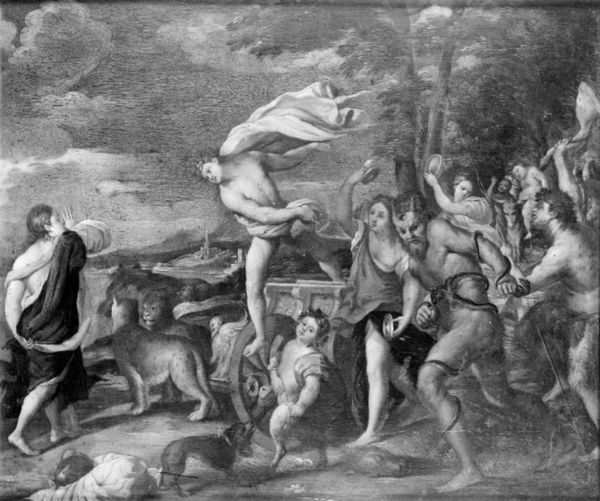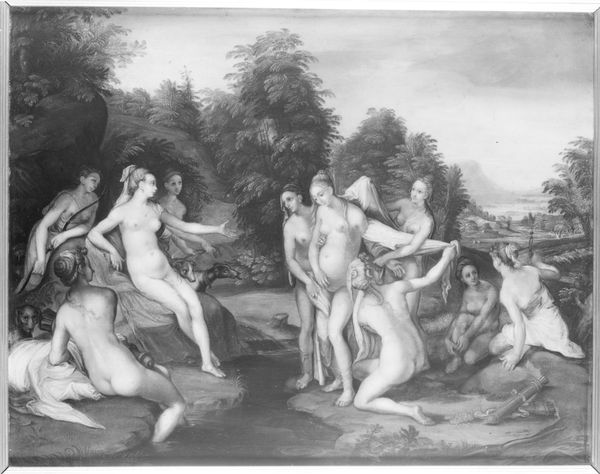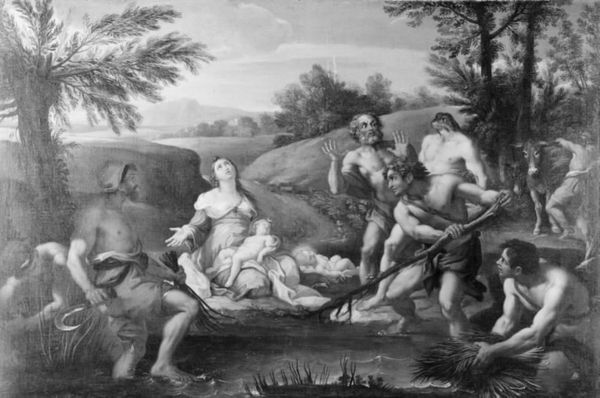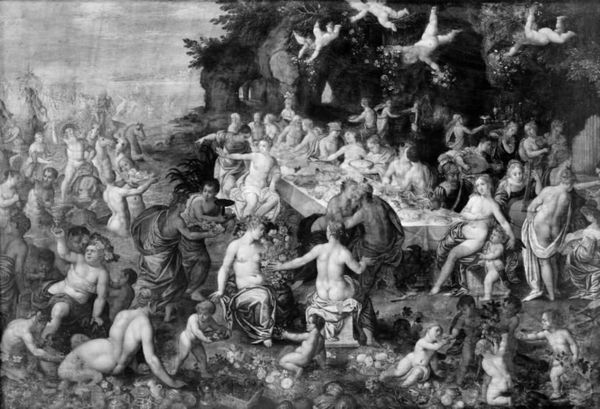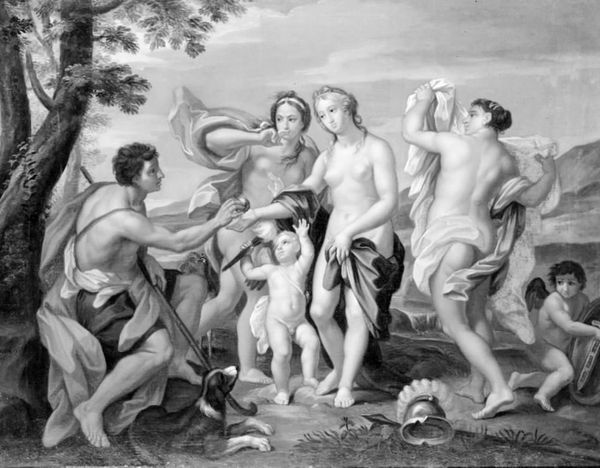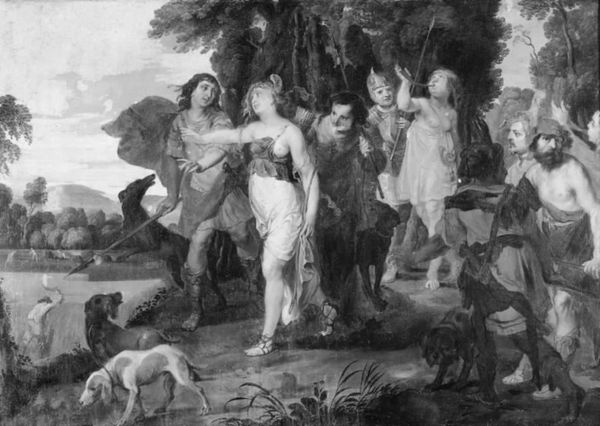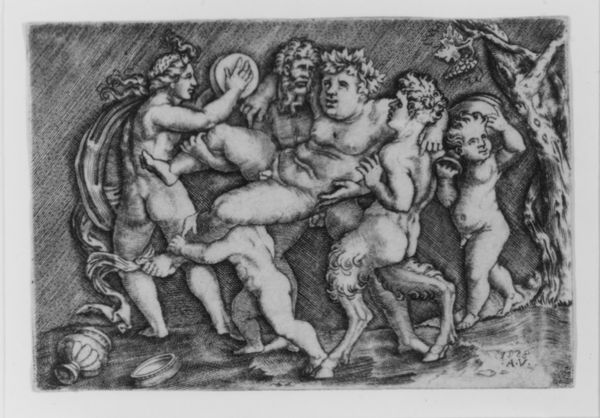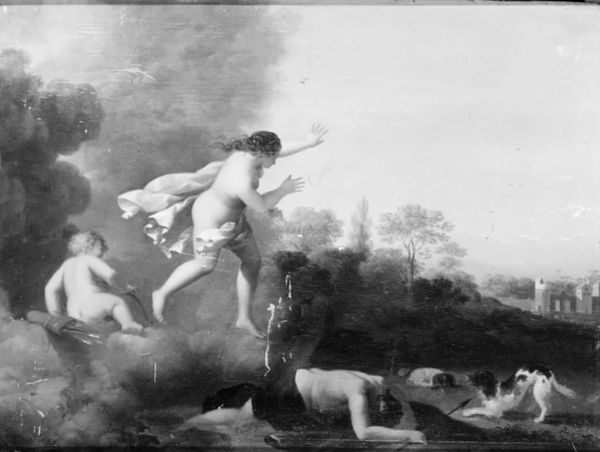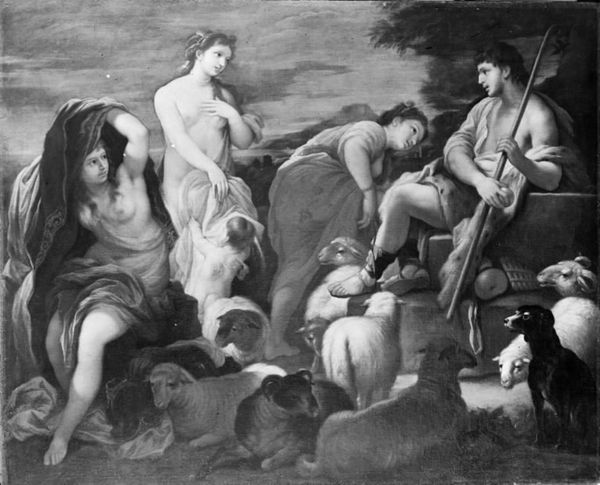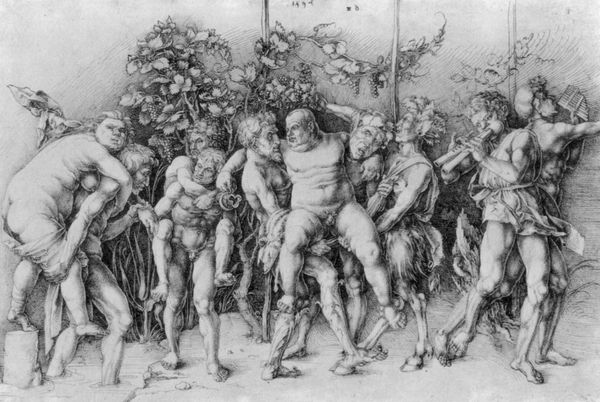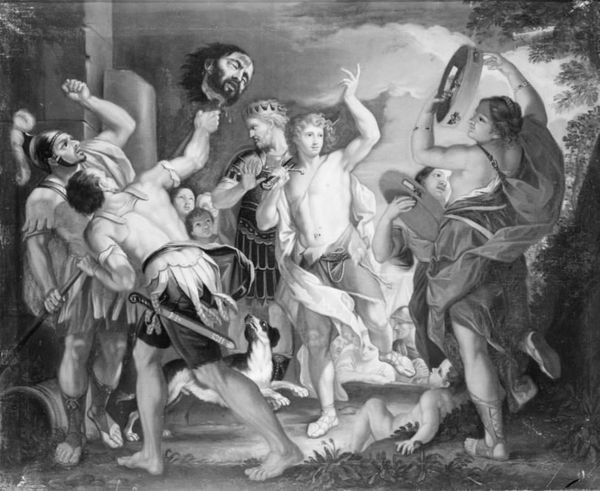
painting, oil-paint, wood
#
allegory
#
baroque
#
painting
#
oil-paint
#
landscape
#
figuration
#
wood
#
genre-painting
#
history-painting
#
nude
#
realism
Dimensions: 26.8 cm (height) x 37.5 cm (width) (Netto)
Jan Brueghel the Elder painted "Callisto in Diana's Bath" on copper in the early 17th century. This work exemplifies the era's fascination with classical mythology and the female nude, but also reflects a deeply gendered social order. Here, we see the goddess Diana discovering Callisto's pregnancy, the result of rape by Jupiter. Brueghel's choice of this scene highlights the period's concern with female chastity and the consequences of its violation. Painted in the Netherlands, a region grappling with religious and social upheaval, the work resonates with anxieties about order and morality. The setting, a carefully constructed Arcadian landscape, contrasts sharply with the very real social constraints placed upon women at the time. Understanding this painting requires us to delve into the social history of the period, examining conduct manuals, legal documents, and other visual representations of women to fully grasp the cultural context in which Brueghel was working. Ultimately, art like this provides a window into the complex interplay between artistic expression and social norms.
Comments
No comments
Be the first to comment and join the conversation on the ultimate creative platform.
